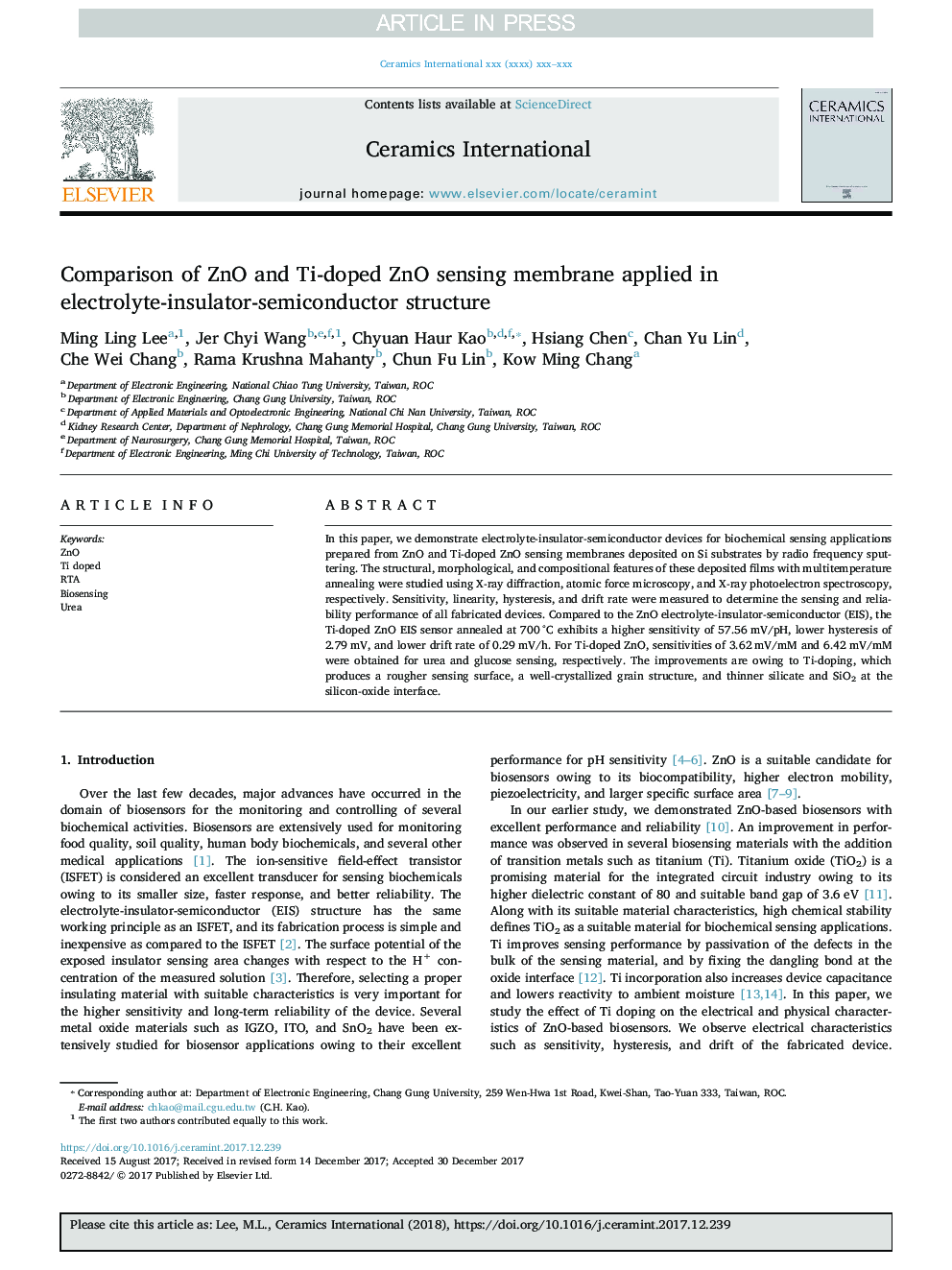| Article ID | Journal | Published Year | Pages | File Type |
|---|---|---|---|---|
| 7887608 | Ceramics International | 2018 | 8 Pages |
Abstract
In this paper, we demonstrate electrolyte-insulator-semiconductor devices for biochemical sensing applications prepared from ZnO and Ti-doped ZnO sensing membranes deposited on Si substrates by radio frequency sputtering. The structural, morphological, and compositional features of these deposited films with multitemperature annealing were studied using X-ray diffraction, atomic force microscopy, and X-ray photoelectron spectroscopy, respectively. Sensitivity, linearity, hysteresis, and drift rate were measured to determine the sensing and reliability performance of all fabricated devices. Compared to the ZnO electrolyte-insulator-semiconductor (EIS), the Ti-doped ZnO EIS sensor annealed at 700 °C exhibits a higher sensitivity of 57.56 mV/pH, lower hysteresis of 2.79 mV, and lower drift rate of 0.29 mV/h. For Ti-doped ZnO, sensitivities of 3.62 mV/mM and 6.42 mV/mM were obtained for urea and glucose sensing, respectively. The improvements are owing to Ti-doping, which produces a rougher sensing surface, a well-crystallized grain structure, and thinner silicate and SiO2 at the silicon-oxide interface.
Keywords
Related Topics
Physical Sciences and Engineering
Materials Science
Ceramics and Composites
Authors
Ming Ling Lee, Jer Chyi Wang, Chyuan Haur Kao, Hsiang Chen, Chan Yu Lin, Che Wei Chang, Rama Krushna Mahanty, Chun Fu Lin, Kow Ming Chang,
